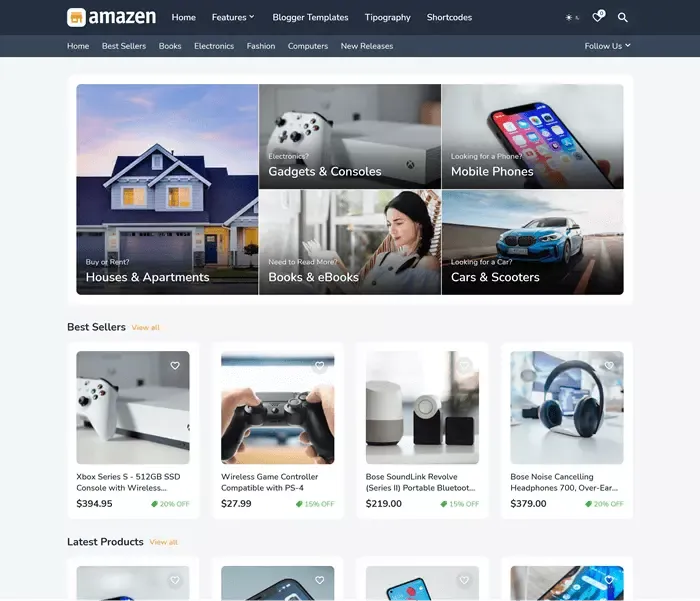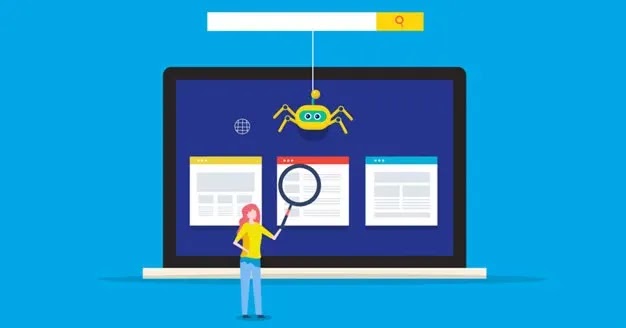11 Powerful SEO Tips to Boost Blog or Website Traffic
There are many reasons to create a blog or website. Perhaps you've
created a fantastic product, authored your essay, or simply want to share your
interests and knowledge with the rest of the world. Unfortunately, if your
website has no traffic none of this matters.
SEO is one of the most important factors, and it is essential if you want people
to find your blog or website. The ease with which your target clients may
reach you is determined by your SEO approach. SEO has a significant impact on
your company's success and ranking in search engines like Bing and Google.
Here are 11 Powerful SEO Tips to Boost Blog or Website Traffic:
Make a Blog or Website Look Professional.
Create Sitemaps if your site is new, large, or has a lot of media files.
It is a file that gives search engines the information they need to crawler
and
index web pages, videos and music quickly and efficiently. A useful site map generator is
also provided by Google and Bing.
In addition, visitors should be
encouraged to research and share your content on your website. If you offer
things, at least a few optimized product images should be highlighted on your
site. If you have a blog, include a link to your latest posts and essays. Not
only do these works attract people, but they also attract search engines. It
shows them what you value.
Your blog or website should summarize the entire site to its title and related keywords. To attract people, carefully choose your site's name and keywords.
Pick Relevant Primary and Secondary Keywords
Any good SEO strategy must start with
keyword research. To match people's searches, you should optimize your keywords. You can
create content that draws more visitors to your website if you know how to use
keywords properly. The first step is to determine the primary and secondary
keywords for your website.
Primary keyword: The main emphasis of your article is your primary
keyword.You should choose only one primary keyword per page. It should be
relevant to the purpose of your website, your brand's identity, your products,
and services.
Secondary keywords: The main theme is
supported by your secondary keywords. You'll most likely have a few of these.
They indicate the subtopics you address in the post and are often more
detailed than the principal keyword. Try to include your keywords naturally in
your text, but also don't force keywords if they don't suit you.
The
adoption of a focused theme simplifies the process of selecting keywords for
your website. To correctly use keywords, you must take various aspects of your
website - articles, photographs, and videos - and summarize them in
SEO-friendly terms. Keywords should also appear in the URL, header tags, meta
descriptions, and alt attributes of your website.
Create Quality Original Content Consistently
You need original and high-quality content if you want users to find and
return to your blog or website.
The original content allows the
audience to connect with you by demonstrating your distinct perspective and
skills. Those who use good SEO and post original, trustworthy content are more
likely to see a rise in searches.
Your content should ideally be
comprehensive. This means that the content you publish addresses all a user
may know about the subject. Extensive pages demonstrate to search engines that
you are an expert on the subject.
Fresh, dynamic content is
prioritized by search engines. Avoid copying and pasting text from other blogs
and websites. Search engines will penalize your blog or website for
plagiarism. Concentrate on high-quality, original content.
Furthermore,
whether in the form of new content or products, you must update your website
regularly. Visitors want a cause to come back to your site or share your
information on social networking sites like Facebook and Twitter, etc.
Consider
which themes will provide long-term value to your readers without requiring
frequent updates while
writing SEO content. Try to stay away from current events and seasonal topics, such sites are
unlikely to be significant in the long run.
Focus on a Specific Topic
Search engines attempt to direct users to the most reliable and accurate
results. So, if you're an authority on a topic you'd like to investigate, your
website's content should reflect that. Don't mix up technology's content with,
for example, fashion.
The importance of specificity cannot be
overstated. Your web presence will benefit from relying on what you know
best.
Optimize Your Content for Featured Snippets
Make sure you address the questions your audience poses if you want your
material to have a positive impact. Highlighting clips is one technique to
achieve this.
The top of the Google search results page displays
featured snippets. They're made to respond to a user's question without
requiring the user to leave the page. They're really useful, and because they
come before numbered results, they're likely to draw organic traffic.
To
win one Featured Snippet, you need to customize your content. The tactics you
use to target featured snippets can boost your SEO while also making your
content more useful to visitors.
Create Attractive Page Title and Meta Description
The first thing your viewers will see is your page title and meta
description. Users can determine whether or not to click on your website just
based on them.
As a precaution, make sure once again that the title
of your page adequately describes what is on the page. Do not name the page
"Gaming PC Review" if the content does not describe the topic. This is
how you deceive readers. Which contributes to lose your
Authority, Trust, and SEO Ranking.
A meta description
is a small paragraph within each HTML code of your page. Meta descriptions
appear in search engine results below page titles and explain the purpose of
the page in more detail. Here you can write longer descriptions that do not
fit the page titles.
Pay attention to the description meta tags and
keywords. They are the primary areas you should focus your SEO efforts on.
Here are a few key points to keep in mind:
- Make the page title between 30 and 60 characters long.
- Make sure your meta description isn't more than 150 characters long.
- Include the keyword you want to target.
- Each page's title and Meta Description must be unique.
Use Short and Descriptive URLs
Improving the URL structure can have a big impact on the page's SEO. A
URL can aid search engines in recognizing your site and make the SERP
structure more user-friendly. It's relatively simple to put together,
especially for SEO newbies.
If your blog or website uses dynamic URLs, replace them with static URLs.
For example:
https://yoursite.com/post/detail?id=234879
The number at the end of
the URL represents a specific post but is not descriptive at all.
To
fix this, enable static URLs so you can add important keywords to your
URLs.
With static URLs, the same post would look like this:
https://yoursite.com/post/best-clothes
or
https://yoursite.com/2022/17/best-clothes.html
Remember,
URL length is crucial, so don't turn a URL into a sentence full of keywords.
Lastly, use hyphens to separate words in a URL, instead of collecting them
all.
A good URL should include the following:
- Include your primary keyword if possible.
- Your visitor should be able to figure out what the page is about after reading the URL.
- URLs with fewer than 60 characters are recommended. Because many search engines are unable to parse longer URLs, you may be ranked lower as a result.
Optimize Your Images
To interest readers, use images to highlight the product or service you
want to offer and to break up long blocks of text. It's difficult to resist a
nice graphic that perfectly conveys your post's concept. Because images are so
crucial, you should spend time optimizing them.
Reduce the size of
your online images to a tolerable level as the first step in optimizing them.
If the image is too huge, it may cause your page to load slowly. The image may
not load at all if the file format is not supported.
Make sure your
photos have the proper alt description as well. This not only makes your site
more accessible to screen readers, but it also allows you to use more of the
keywords.
Although Google may not view the images you post to your
site, alt description assists Google search in categorizing them. An image
description should be a maximum of 125 characters.
Internal and External Linking
Backlinks strategy
to your site are a significant ranking factor. When other websites link to
yours, especially if those websites are well-known and trusted, your site gets
authority, and your SEO improves over time. Backlinks can be obtained through
a process known as link building.
Internal links: Use internal
links to lead visitors deeper into your website. In general, you want to link
to anchor text, which are the phrases that visitors use to navigate from one
page to the next.
Internal linkages should be natural and balanced.
Because content made up entirely of links is difficult to read, search engines
will ignore it. Invalid links suggest that you are neglecting regular website
upkeep, resulting in a penalty from search engines.
Learn more about Internal and Externakl Links.
Reduce Your Blog or Website's Load Time
According to Google's research, if a site takes more than three seconds to
load, 53% of mobile users will abandon it. Encourage them to stay on the site
by not encouraging them to leave.
Google Speeds Insights, GTmetrix, and
Pingdom are Tools
used to analyze the speed of your blog or website. These tools provide
thorough instructions on how to make your website load faster. This includes
graphics or scripts that take a long time to load.
The time it
takes for a page to load has an impact on more than simply the user's
experience. It may also have an impact on your SEO. One of the three essential
Web vitalities and ranking factors is page load time.
If your page
is taking too long to load, search for page elements that help speed things
up. Do you have any unnecessary javascript, CSS, or font on your site for
example? To improve page speed, try deleting or preloading them.
Read
more about
how to Optimize your Page Speed, and how to
Fix Avoid Chaining Critical Request.
Do Regular Site Audits
Regular site audits to ensure that your website remains functioning and
user-friendly. It's also a good approach to find issues you might have missed,
such as broken connections or poor load times.
Some of the sites where you can do a Site Audit:
Final thoughts
You'll need SEO if you want your website to prosper. Even for seasoned
SEO experts, mastering SEO is a never-ending process of creativity and
learning.
These 11 Powerful SEO Tips to Boost Blog or Website
Traffic are essential for search engine optimization. Good Google and other
search engine rankings do not happen overnight, so be patient as you implement
these strategies on your blog or website.
Regardless of your
degree of knowledge, use these SEO tips to attain the desired results and win
SERPs. Also, come back often! More SEO tips will be added to this website on a
regular basis.










